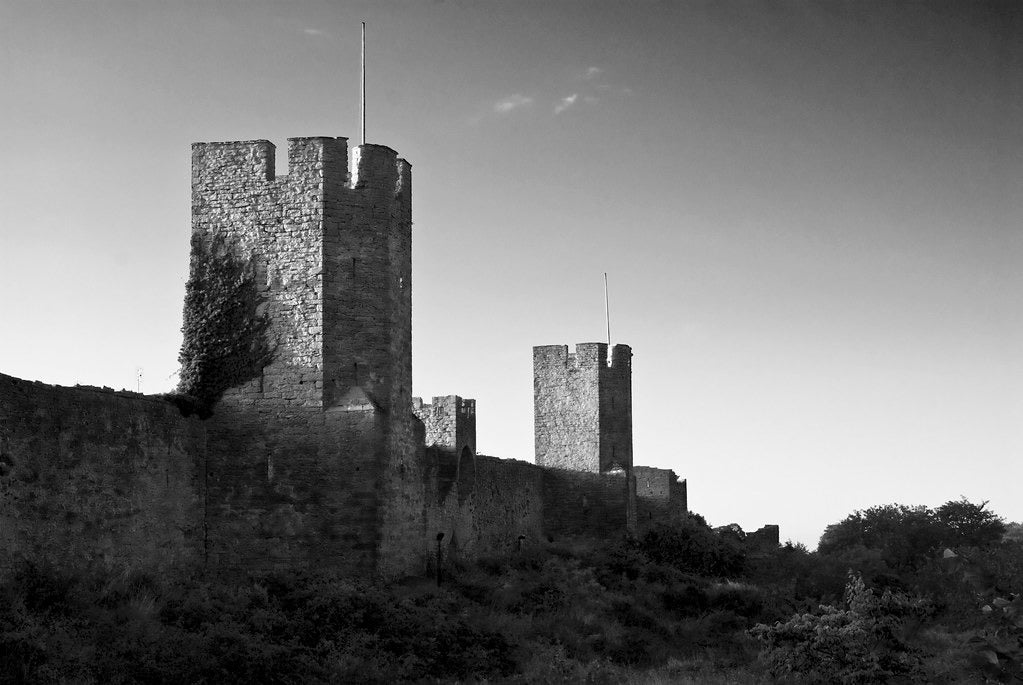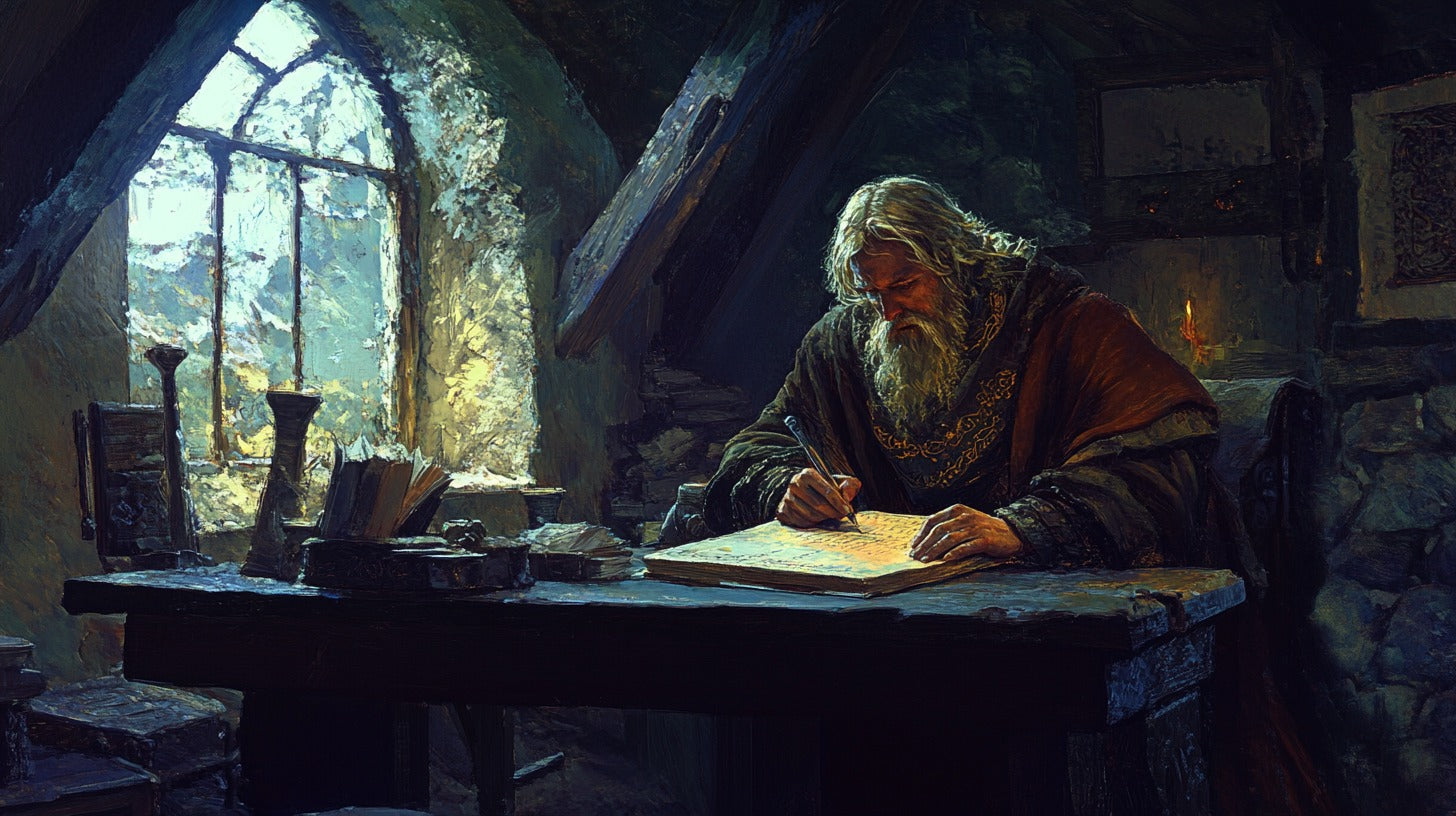
Gotland Unearthed: A Journey Through 9,000 Years of Baltic History
In the heart of the Baltic Sea lies an island shrouded in mystery, its shores whispering tales of ancient peoples and forgotten kingdoms. Gotland, a name that conjures images of Viking longships and buried treasures, holds within its soil a story far older and more complex than most can imagine. Like a tome waiting to be deciphered, the archaeological history of this Swedish island unfolds layer by layer, revealing secrets that have lain dormant for millennia.
The Dawn of Gotland's Human History

Paleolithic Echoes: The First Footsteps
As the great ice sheets retreated, leaving behind a landscape raw and untamed, the first humans set foot on what would become Gotland. These early adventurers, their names lost to time, walked upon shores we can scarcely recognize today. The tools they left behind – crude flint implements and weathered bone fragments – are like breadcrumbs leading us back through the mists of time.
Mesolithic Mysteries: Hunters and Gatherers
As the seasons turned and centuries passed, Gotland's first inhabitants adapted to their island home. They were a hardy folk, these Mesolithic hunter-gatherers, living off the bounty of land and sea. Archaeological sites like Stora Förvar cave paint a vivid picture of their lives – fish bones and seal remains tell of skilled maritime hunters, while delicate bone needles speak of a people who knew how to survive the harsh Baltic winters.
Neolithic Revolution: The Birth of Agriculture

Viking Age brooch from a hoard find in Gotland, dating back to the 10th century / Photo: Mary Harrsch CC BY-NC-SA 2.0
Stone Age Settlements
The wheel of time turned once more, and with it came a revolution that would change Gotland forever. The Neolithic age dawned, bringing with it the first farmers. These pioneers cleared the land, planted crops, and raised livestock. Their settlements, once nothing more than shadows in the soil, have been brought to light by the patient work of archaeologists. Pottery shards and stone axes tell the story of a people learning to tame the wild island.
The Enigma of Megalithic Tombs
But it wasn't all about survival. The Neolithic people of Gotland had dreams and beliefs that stretched beyond the mundane. They built great stone tombs, megalithic structures that still dot the landscape like the fingerprints of giants. These silent sentinels guard secrets we're only beginning to understand. Who were they built for? What rituals took place within their stone chambers? The answers lie tantalyzingly out of reach, like whispers on the wind.
The Bronze Age Brilliance

Late Bronze Age stone ship from Gotland / Photo: TyB, CC BY 2.0
Metallurgy and Social Stratification
As copper and tin were alloyed into bronze, Gotland entered a new era of prosperity. The island's strategic location made it a hub of trade, and with trade came wealth and social complexity. Archaeological evidence shows a society becoming increasingly stratified. Rich burials filled with ornate bronze goods speak of an elite class, while simpler graves tell of those less fortunate. It's a stark reminder that even in ancient times, not all were equal.
The Mysterious Stone Ships
Perhaps the most enigmatic remnants of Bronze Age Gotland are the stone ships. These boat-shaped arrangements of standing stones, some stretching over 40 meters in length, are unique to Scandinavia. Were they monuments to great chiefs? Symbolic vessels to carry the dead to the afterlife? Or something else entirely? Like silent sentinels, they stand guard over their secrets, challenging us to unravel their mystery.
Iron Age Innovations

The Rise of Fortified Settlements
As iron replaced bronze, Gotland's society continued to evolve. The island saw the rise of fortified settlements, hinting at a time of increased conflict or competition. Sites like Havor showcase impressive defensive works, with ramparts and palisades protecting the communities within. It's a sobering reminder that even on this idyllic island, life could be fraught with danger.
Roman Influences and Trade Networks
Though far from the borders of the Roman Empire, Gotland was not immune to its influence. Roman coins and luxury goods found on the island speak of far-reaching trade networks. These artifacts are like breadcrumbs, allowing us to trace the paths of ancient merchants and adventurers who connected this Baltic outpost to the wider world.
Viking Age Splendor

The Spillings Hoard / Photo: W.Carter, CC BY-SA 4.0
Gotland as a Trading Hub
The Viking Age saw Gotland reach new heights of prosperity. The island became a key player in the vast trading networks that spanned from the Arabian caliphates to the frozen shores of Greenland. Archaeological evidence paints a picture of a cosmopolitan society, with goods from far and wide finding their way to Gotland's shores.
The Silver Hoards: Buried Treasures of the North
But perhaps nothing speaks of Gotland's Viking Age wealth quite like its famous silver hoards. These caches of silver coins and jewelry, buried for safekeeping and never reclaimed, have been found in their hundreds across the island. Each hoard is like a time capsule, offering a frozen moment of Viking Age economics and artistry.
Runestones and Picture Stones: Silent Storytellers
The Vikings of Gotland left behind more than just buried treasure. The island's unique picture stones and runestones are like illustrated history books, carved in stone. Warriors and ships, mythical beasts and ancient gods – these silent storytellers offer tantalizing glimpses into the beliefs and values of a long-vanished society.
Medieval Transformations

The Christianization of Gotland
As the Viking Age waned, a new power rose to prominence – Christianity. The archaeological record shows this transition in vivid detail. Pagan burial grounds gave way to Christian cemeteries, and the hammer of Thor was slowly replaced by the cross. Yet, as is often the case, the old ways didn't die easily. Syncretism and resistance can be read in the artifacts of this turbulent time.
Urban Development and the Rise of Visby
The medieval period saw Gotland's capital, Visby, grow into a major urban center. Archaeological excavations have revealed a city of stone buildings and paved streets, of bustling marketplaces and imposing churches. The remains of Visby's powerful walls still stand today, a testament to the wealth and importance of this Hanseatic trading post.
Modern Archaeological Discoveries

Underwater Archaeology: Secrets Beneath the Waves
Gotland's archaeological treasures aren't limited to dry land. The waters around the island hide shipwrecks spanning centuries, from Viking longships to medieval cogs. Underwater archaeology has opened up new frontiers in our understanding of Gotland's maritime history, revealing sunken cargoes and forgotten tragedies.
Cutting-Edge Technologies in Gotland's Archaeology
Today, archaeologists working on Gotland are armed with tools their predecessors could only dream of. LiDAR surveys reveal ancient landscapes hidden beneath the forest canopy. DNA analysis brings us face-to-face with Gotland's long-dead inhabitants. Ground-penetrating radar allows us to 'see' beneath the soil without lifting a spade. It's a brave new world of archaeology, and Gotland is at its forefront.
Preserving Gotland's Archaeological Heritage

Close up of the Tängelgårda image stone from Gotland / Photo: JC Merriman, CC BY 2.0.
Challenges and Conservation Efforts
Yet with knowledge comes responsibility. Gotland's archaeological sites face threats from development, agriculture, and even well-meaning tourism. Conservationists and archaeologists work tirelessly to preserve these irreplaceable treasures, racing against time and the elements to ensure that Gotland's rich history isn't lost forever.
The Role of Museums and Education
Museums play a crucial role in this preservation effort, not just by safeguarding artifacts, but by bringing Gotland's history to life for new generations. Interactive exhibits and educational programs ensure that the island's archaeological heritage isn't just preserved in dusty storerooms, but remains a living, breathing part of Gotland's identity.
Conclusion
As we stand on Gotland's shores today, we're part of a story that stretches back millennia. From the first hunter-gatherers to the Viking traders, from medieval merchants to modern archaeologists – each has left their mark on this remarkable island. Gotland's archaeological history is more than just a record of the past; it's a testament to human resilience, ingenuity, and the enduring allure of this Baltic gem.
The work of understanding Gotland's past is far from over. Each year brings new discoveries, new technologies, and new questions. As we continue to dig deeper into the island's rich soil, who knows what secrets we'll uncover? One thing is certain – Gotland will continue to surprise, delight, and challenge us for generations to come.
FAQs
- What is the oldest archaeological find on Gotland?
The oldest human-related finds on Gotland date back to the Mesolithic period, around 7200 BC. These include stone tools and animal bones found in sites like Stora Förvar cave.
- How many Viking silver hoards have been found on Gotland?
Over 700 Viking Age silver hoards have been discovered on Gotland, making it one of the richest areas for such finds in the world.
- What are Gotland's picture stones?
Picture stones are large stone slabs with carved and painted images, unique to Gotland. They often depict scenes from Norse mythology and Viking life, dating from the 5th to the 11th centuries AD.
- Is it legal to use a metal detector on Gotland?
Metal detecting for archaeological artifacts is strictly regulated in Sweden, including Gotland. It requires permission from the County Administrative Board and finds must be reported to authorities.
- How has climate change affected archaeology on Gotland?
Climate change poses significant challenges to Gotland's archaeology. Rising sea levels threaten coastal sites, while changing weather patterns can accelerate the erosion of exposed ruins and artifacts.
References
Andrén, A. (2011). "The Viking Age Picture Stones of Gotland: A Chronological Revision." Lund Archaeological Review, 17, 23-46.
Carlsson, D. (2018). "Gotland in the Viking Age: An Overview of Recent Archaeological Research." Journal of Northern Studies, 12(1), 91-118.
Hedenstierna-Jonson, C. et al. (2017). "A female Viking warrior confirmed by genomics." American Journal of Physical Anthropology, 164(4), 853-860.
Rundkvist, M. (2019). "The Viking Age Sequel: Archaeology of the First Two Centuries of the Scandinavian Middle Ages on Gotland." Medieval Archaeology, 63(2), 299-335.
Zachrisson, T. (2013). "Germundsjö revisited – a Late Iron Age silver hoard from western Sweden." Fornvännen, 108(4), 257-267.
"Visby, Gotland, Sweden" by Ben124. is licensed under CC BY 2.0.
"Gotland i Östersjön" by Edaen, OSM, Lantmäteriet is licensed under CC BY-SA 2.5.
"Viking box brooch from hoard find in Gotland, Sweden 10th century CE (?) Bronze Gold and Silver" by mharrsch is licensed under CC BY-NC-SA 2.0.
"Late Bronze Age 'ship Setting'" by TyB is licensed under CC BY 2.0.
"Vikings Tängelgårda image stone Gotland - 25901894206 Swedish History Museum (Historiska museet) MuseumsPartner exhibition 'Vikings Beyond the legend' Australian National Maritime Museum Sydney 2013 (valknut)" by JC Merriman is licensed under CC BY 2.0.
"File:Spillings Silver Hoard 1.jpg" by W.carter is licensed under CC BY-SA 4.0.
"Visby, Gotland, Sweden" by Ben124. is licensed under CC BY 2.0.
"Viking key from Gotland Sweden 9th-10th centuries CE Bronze" by mharrsch is licensed under CC BY-NC-SA 2.0.








